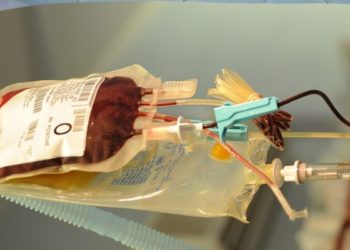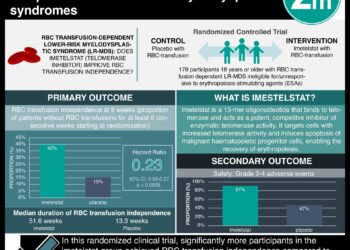Blood transfusions from female, previously pregnant, or sex-discordant donors do not increase mortality
1. In this large retrospective cohort, there were no increases in mortality from red blood cell transfusions from female, previously pregnant, or sex-discordant donors.
Evidence Rating Level: 2 (Good)
Study Rundown: Recently, a few studies have suggested that blood donation from female donors, especially to male recipients, may result increased adverse events, such as transfusion-related acute lung injury. However, though an uptick in these events may be associated with antibody-mediated mechanisms, it is unclear if there is an increased mortality risk under these situations. Analyzing data from 3 large cohorts, red blood cell transfusions from female, sex-discordant, and previously pregnant donors did not result in a dose-dependent increases in mortality.
Though this study suggests that sex is not a significant factor in determining mortality from transfusions, some limitations should be noted. First, while there were no significant associations between any of the donor exposures and mortality, there may have been an association with other adverse outcomes, such as hospital length of stay or frequency of non-fatal adverse events. Further, the study did not account for blood components other than red blood cells.
Click to read the study, published today in JAMA
Relevant Reading: Association of Blood Transfusion From Female Donors With and Without a History of Pregnancy With Mortality Among Male and Female Transfusion Recipients.
In-Depth [retrospective cohort]: Data from 3 retrospective cohorts of transfusions in the United States and Scandinavia was used and analyzed. In-hospital mortality was the primary outcome, and long-term mortality was a secondary outcome. There were no significant associations between any of the 3 donor exposures and in-hospital mortality in the 3 cohorts. Specifically, hazard ratios for in-hospital mortality per transfused unit from female donors were 0.99 (CI95 0.96 to 1.03) for the Kaiser Permanent cohort, 1.00 (CI95 0.99 to 1.01) for the US hospitals cohort, and 1.00 (CI95 0.99 to 1.00) for the Scandinavian cohort. For units from previously pregnant or parous female donors, hazard ratios were 1.00 (CI95 1.00 to 1.01) for the Kaiser Permanente cohort, 1.01 (CI95 0.98 to 1.03) for a US hospitals cohort, and 1.00 (CI95,1.00 to 1.01) for the Scandinavian cohort. For units from sex-discordant transfusions, hazard ratios were 1.02 (CI95 0.99 to 1.05) for the Kaiser Permanente cohort, 0.99 (CI95 0.98 to 1.00) for a US hospitals cohort, and 1.00 (CI95 0.99 to 1.00) for the Scandinavian cohort.
Image: PD
©2019 2 Minute Medicine, Inc. All rights reserved. No works may be reproduced without expressed written consent from 2 Minute Medicine, Inc. Inquire about licensing here. No article should be construed as medical advice and is not intended as such by the authors or by 2 Minute Medicine, Inc.





